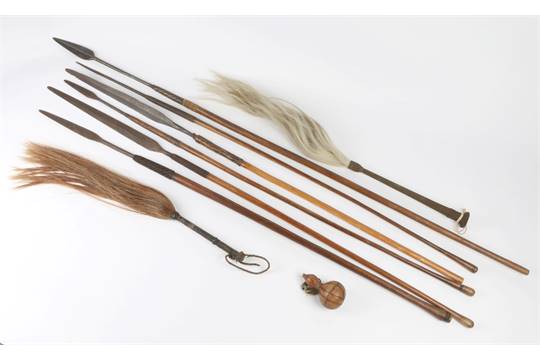Khopesh
Students will explore the use and fighting style of the Egyptian Khopesh, from 3rd millennium BCE – 1300 BCE. The curvature of the blade made it stronger and the thick blade gave it extra cutting power. Another use of the curve was to hook an opponent’s arm or weapon and then jerk it to unbalance or disarm them. The curve was also useful for thrusting around shields. The sharp tip of the blade would easily slide around the shield and into the arm or any body part that was hiding behind the shield. That ability alone is enough to make the Khopesh design one of the most lethal ever used against shielded opponents.
Iklwa
The Iklwa is a relatively short spear with a long, dagger-like blade that was about half the length of the overall spear. The weapon was designed as a primarily thrusting weapon, although it could be used for slashing an enemy. The name "Iklwa" is derived from the sound that the spear makes as it stabs into the body and the sucking sound when it is withdrawn. Made famous in the Zulu Wars of South Africa, and used by the Zulu tribe during the Battle of Isandlwana, the Battle of Rorke's Drift, and the Battle of Ulundi during the Zulu war in 1879 South Africa.
Assegai
(African Spear)
The use of various types of the assegai was widespread all over Africa and it was the most common weapon used before the introduction of firearms. The Zulu and other Nguni tribes of South Africa were renowned for their use of the assegai. The traditional spear was used for a softening range attack on enemy formations before closing in for close quarters battle with the iklwa. This tactical combination originated during Shaka's military reforms.



